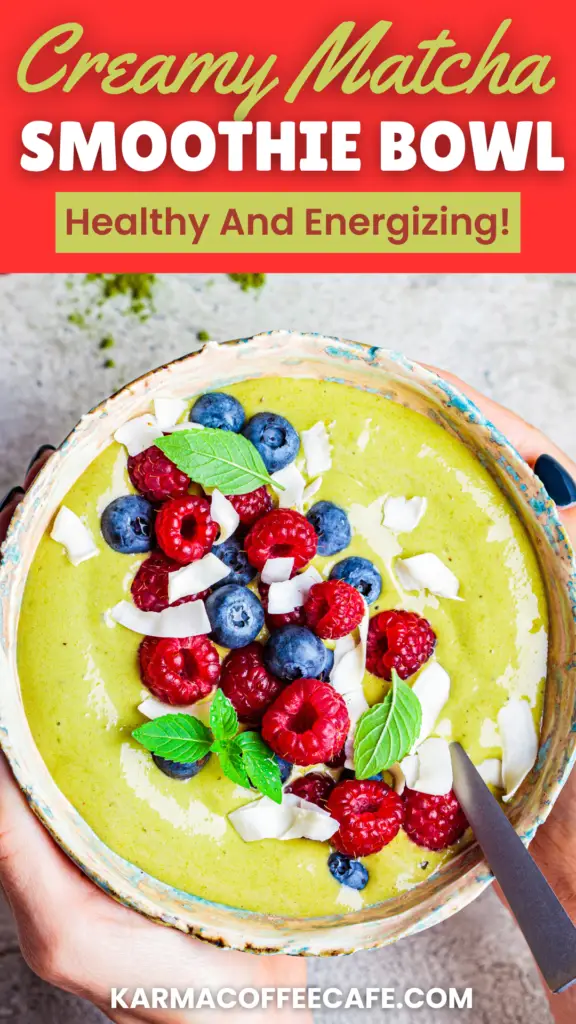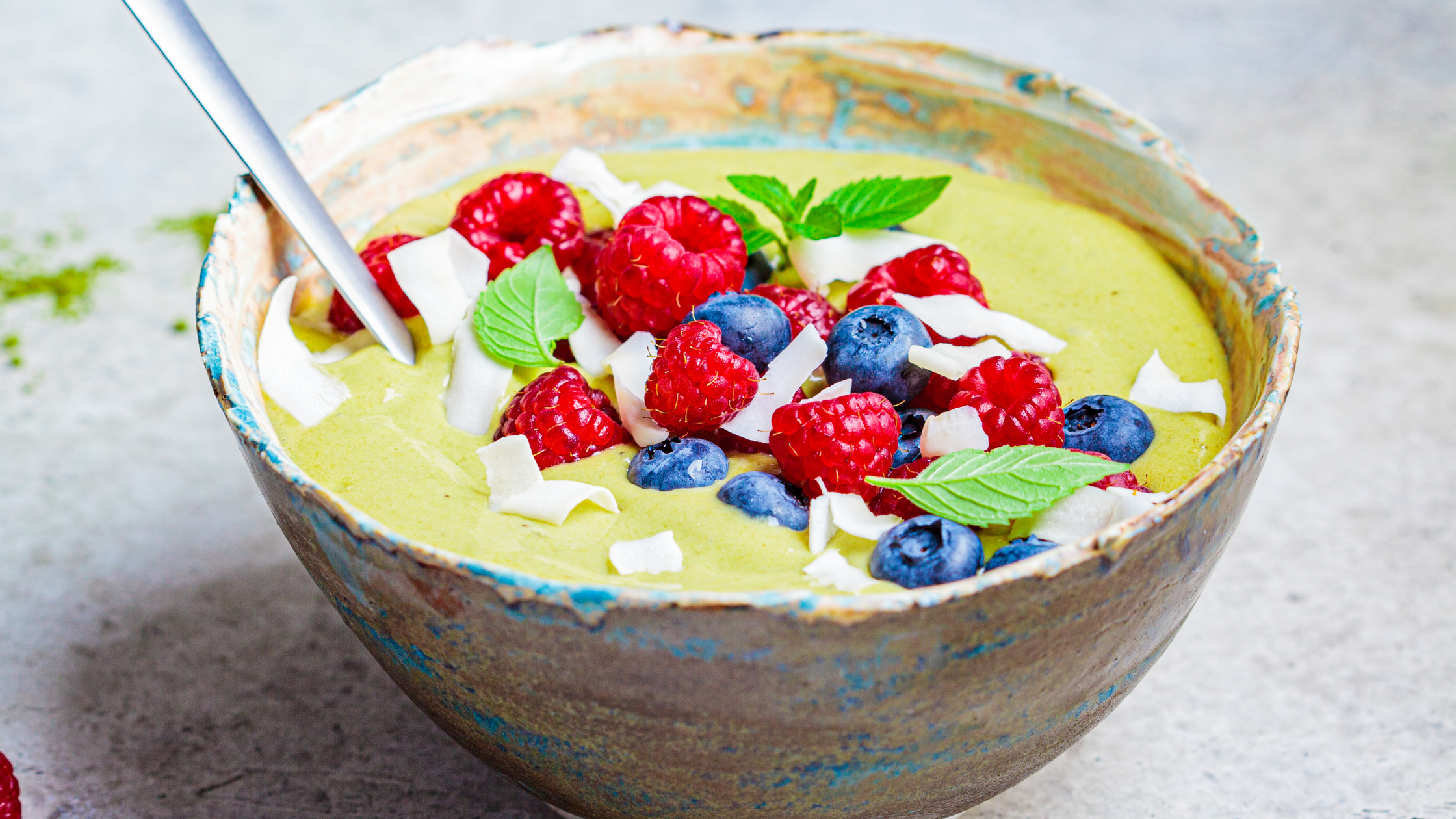Matcha smoothie bowls are a great way to start your day.
Packed with nutrients, they offer a delicious and refreshing breakfast option.
Matcha, known for its high antioxidant content, brings a boost of energy and focus to your morning.
Combined with fruits and greens, this bowl is not only tasty but also incredibly nutritious.
It’s easy to make, customizable, and perfect for anyone looking to kickstart their day with something healthy and satisfying.
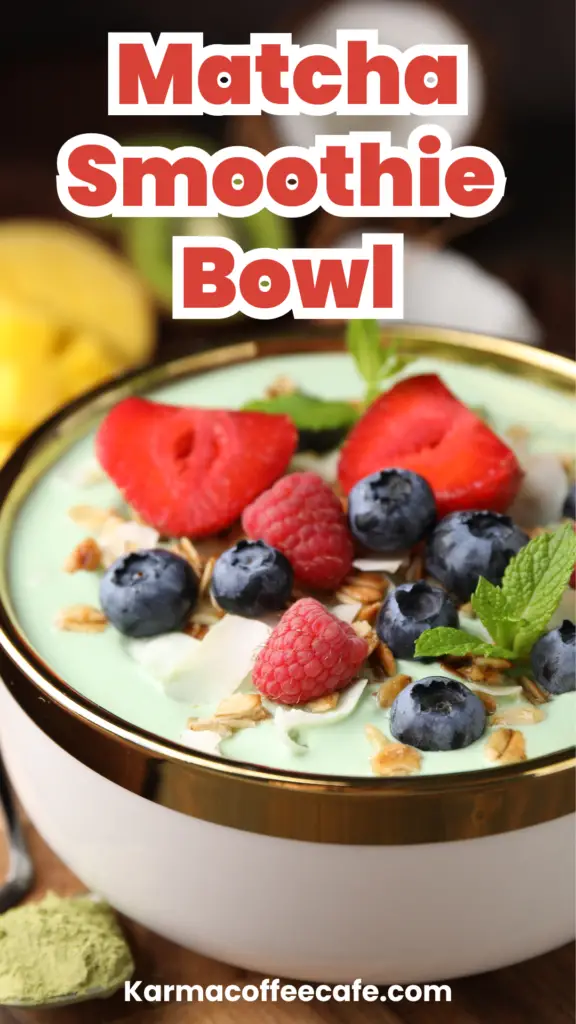
How To Make A Matcha Smoothie Bowl: At A Glance
- Blend frozen banana, matcha powder, spinach or kale, and coconut or almond milk.
- Adjust thickness by adding more liquid or frozen fruit.
- Pour into a bowl and top with fresh fruit, seeds, or granola.
- Enjoy immediately for the best texture!
Why Choose Matcha?
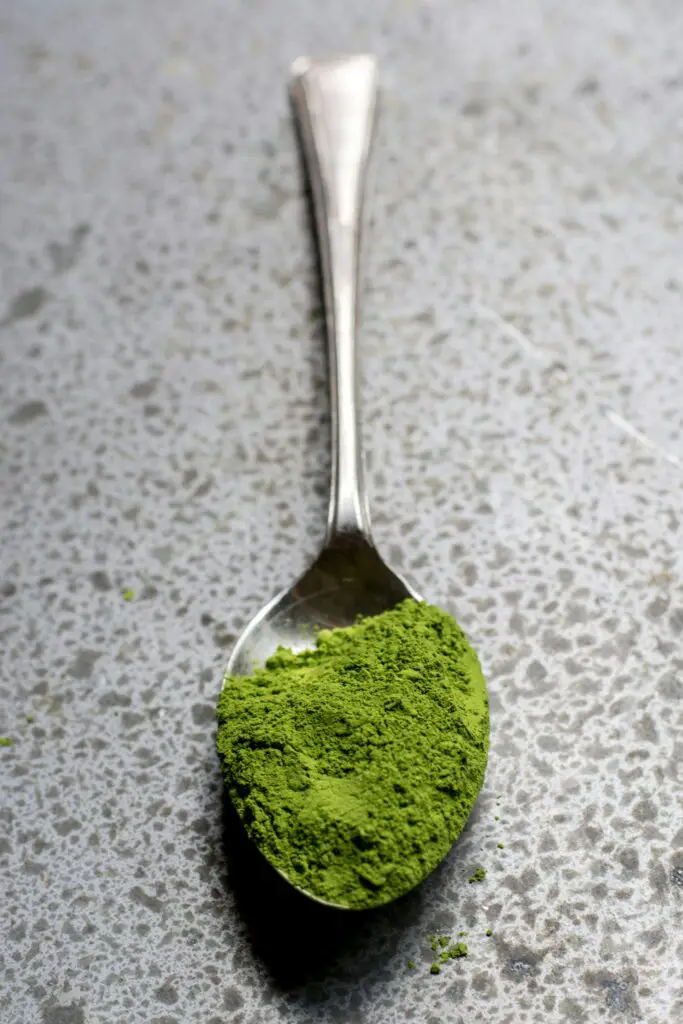
What is Matcha?
Matcha is a powdered green tea made by grinding whole tea leaves into a fine, vibrant green powder.
Unlike traditional green tea, where the leaves are steeped and discarded, matcha allows you to consume the entire leaf.
This means you get more of the beneficial compounds found in green tea, especially antioxidants.
In fact, matcha contains 137 times more antioxidants than brewed green tea, making it a powerhouse for boosting health.
Health Benefits of Matcha
One of the key health benefits of matcha is its high antioxidant content.
These antioxidants, particularly a compound called EGCg (Epigallocatechin gallate), help fight free radicals, which can cause damage to cells and contribute to aging and diseases like cancer.
By neutralizing these harmful compounds, matcha supports overall health and may even lower the risk of certain cancers.
Matcha is also known for its natural energy-boosting properties.
It contains caffeine, but unlike coffee, matcha’s caffeine is released more slowly, providing a sustained energy boost without the jitters or crashes.
This makes it a perfect addition to your morning routine or even as a midday pick-me-up.
In addition to antioxidants and energy, matcha has other health benefits.
It is known to have detoxifying effects, helping the body eliminate toxins more efficiently.
The presence of chlorophyll, the compound that gives matcha its green color, supports this detoxification process.
Matcha also promotes calmness and mental clarity, thanks to the amino acid L-theanine, which works synergistically with caffeine to improve focus while keeping you relaxed.
Lastly, matcha may help with metabolism enhancement.
Some studies suggest that consuming matcha can increase the body’s ability to burn calories, which supports weight management efforts.
All of these benefits make matcha an ideal ingredient for a healthy lifestyle, especially when combined with a nutritious smoothie bowl.
Ingredients Overview
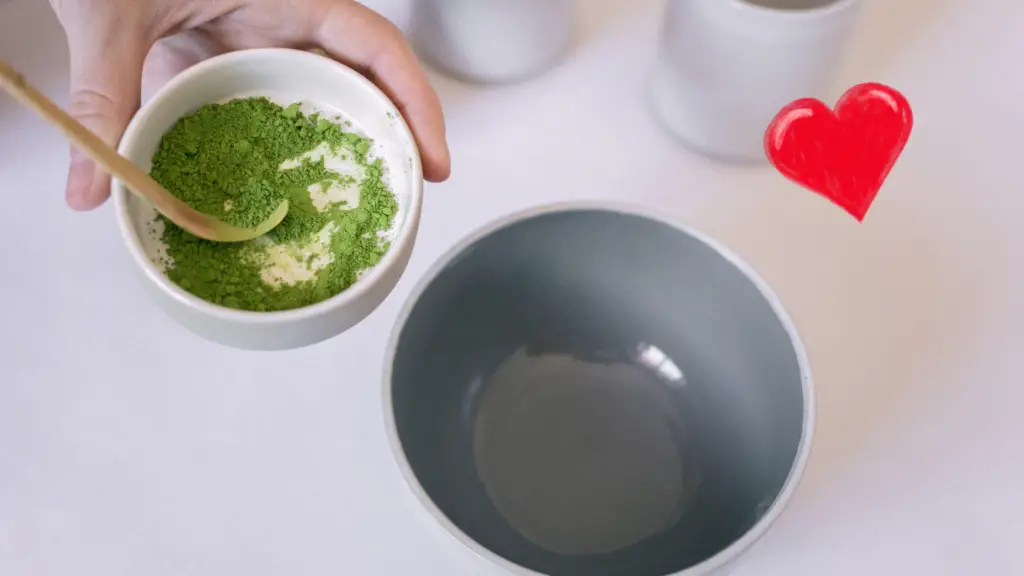
Core Ingredients
To make a matcha smoothie bowl, you’ll need a few essential ingredients that provide both flavor and nutritional benefits:
- Frozen Banana (1 large banana, sliced and frozen): This will serve as the creamy base for your smoothie bowl. It adds thickness and natural sweetness without needing any additional sugars.
- Matcha Powder (1-2 teaspoons): Use high-quality matcha powder to get the best flavor and health benefits. Adjust the quantity based on how strong you prefer the matcha flavor.
- Spinach or Kale (1 cup, packed): Either of these leafy greens will provide a nutrient boost. Use frozen spinach or kale for an even colder, thicker texture. You can also mix both for added variety.
- Coconut Milk or Almond Milk (¾ to 1 cup): This is your liquid base. For a richer taste, go with coconut milk, or use almond milk for a lighter option. Start with ¾ cup and add more if needed to achieve the desired consistency.
- Optional: Pineapple or Mango (½ cup, frozen): These fruits add a tropical twist and balance the earthy flavor of matcha. Pineapple offers a tangy sweetness, while mango brings a mellow, fruity flavor.
Topping Suggestions
You can make your Matcha smoothie taste even better with these topping ideas:
- Fresh Fruits: Top with ¼ cup of sliced fresh fruits like berries (blueberries, strawberries), kiwi, or mango. These fruits add a burst of flavor and important nutrients like vitamins and antioxidants.
- Seeds: Add a tablespoon of chia seeds, flaxseeds, or hemp seeds for extra fiber, protein, and omega-3 fatty acids. These seeds also create a nice texture contrast.
- Granola, Shredded Coconut, or Nuts: Sprinkle 2 tablespoons of granola or shredded coconut, or a handful of nuts like almonds or walnuts, for a crunchy, satisfying bite.
Step-by-Step Recipe
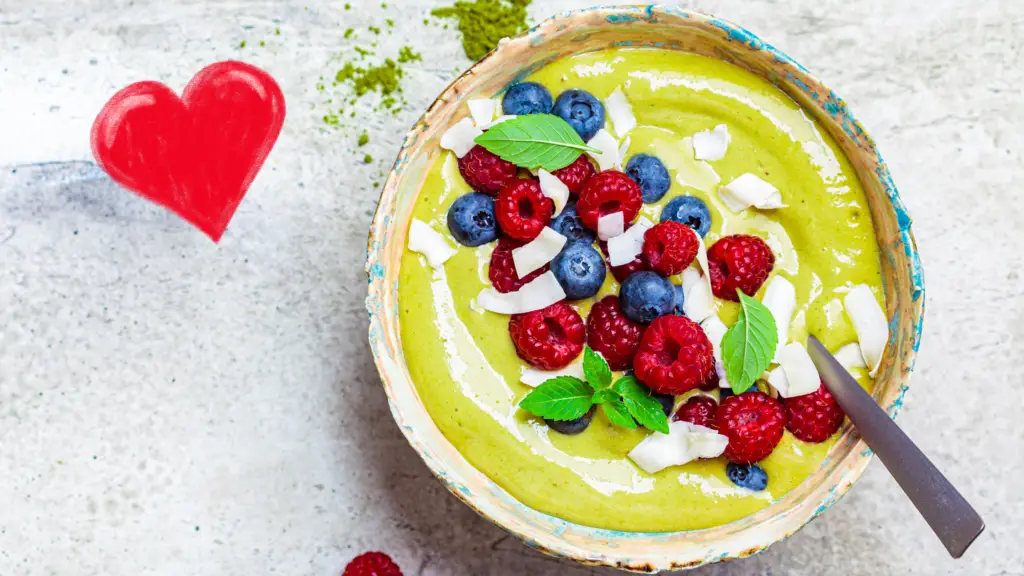
Follow these simple steps to create a delicious and creamy matcha smoothie bowl:
Step 1: Prepare the Ingredients
Gather 1 large frozen banana, 1–2 teaspoons of matcha powder, 1 cup of packed spinach or kale, and ¾ to 1 cup of coconut or almond milk.
If you’re adding frozen pineapple or mango, use ½ cup for a fruity twist.
Step 2: Blend the Base
Add the frozen banana, spinach (or kale), matcha powder, and ¾ cup of coconut or almond milk into a high-speed blender.
If you’re using optional fruits like pineapple or mango, include them at this stage.
Step 3: Blend Until Smooth
Blend the ingredients on high until you reach a thick, creamy consistency.
Step 4: Serve and Top
Pour the thick, creamy smoothie into a bowl.
Add your preferred toppings such as fresh fruits, seeds, granola, or shredded coconut.
Enjoy immediately!
Tips for Adjusting Thickness
- Thicker Texture: Use less liquid, or add more frozen banana or ice cubes to thicken the mixture. A thicker smoothie bowl should be scoopable, not drinkable.
- Thinner Texture: Add more liquid (coconut or almond milk) to make the smoothie easier to blend and closer to a drinkable consistency.
Recipe Variations
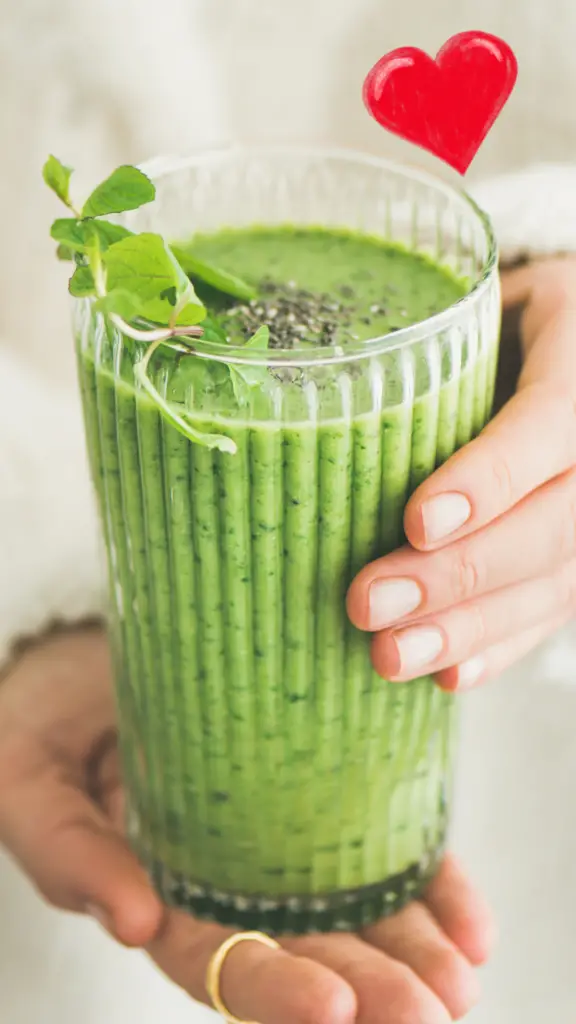
Vegan and Gluten-Free
This recipe is naturally vegan and gluten-free as long as you use plant-based milk like coconut, almond, or soy milk.
You can also include gluten-free toppings like granola or seeds to keep the bowl 100% gluten-free.
Drinkable Smoothie
If you’d prefer a drinkable matcha smoothie, simply add more liquid.
Increase the amount of coconut or almond milk by ¼ cup increments until you reach your desired smoothie consistency.
This option is perfect for a grab-and-go breakfast.
Nutritional Benefits of a Matcha Smoothie Bowl
A matcha smoothie bowl is not only delicious but also packed with nutrients that can support overall health.
Here’s a breakdown of the key nutritional benefits:
Fiber, Vitamins, Healthy Fats, and Protein
Fiber
The core ingredients like spinach, kale, and bananas provide a solid dose of dietary fiber.
Fiber is essential for digestive health and can help regulate blood sugar levels.
For extra fiber, adding chia seeds or flax seeds is a great option.
Vitamins
Matcha is rich in vitamins such as vitamin C and B-complex vitamins, which help boost your immune system and support energy metabolism.
Greens like spinach and kale provide vitamins A, K, and folate, contributing to eye health, bone health, and overall cellular function.
Healthy Fats
Adding chia seeds, flax seeds, or nuts provides healthy fats, specifically omega-3 fatty acids.
These fats are essential for brain health, reducing inflammation, and supporting heart health.
Protein
While the matcha smoothie bowl isn’t inherently high in protein, adding ingredients like chia seeds, hemp seeds, or a scoop of plant-based protein powder can boost the protein content.
This makes the smoothie bowl more filling and beneficial for muscle repair, especially after workouts.
Matcha’s Role in Supporting Metabolism and Health
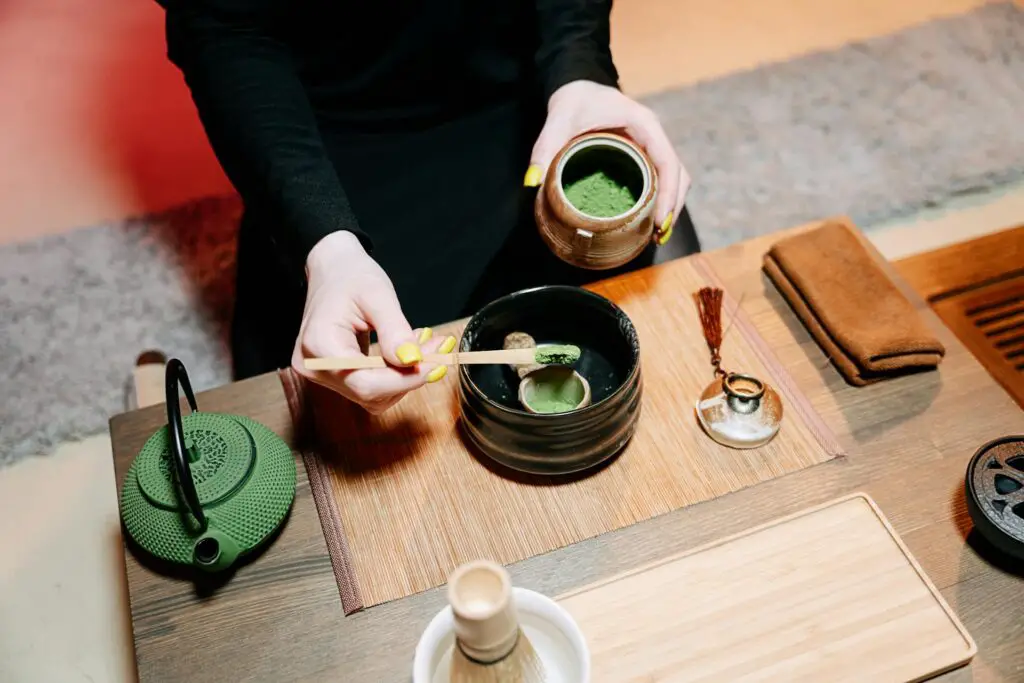
We already touched on Matcha’s health benefits earlier, but let’s dive in a bit further.
As we mentioned, one of the primary benefits of matcha is its ability to support metabolism.
Matcha contains a high level of antioxidants, particularly a catechin called EGCg (Epigallocatechin gallate), which can help increase thermogenesis (the body’s rate of burning calories).
This makes matcha a great addition to any meal if you’re looking to support weight management or metabolism.
We also mentioned that Matcha is rich in L-theanine, an amino acid that promotes calmness and reduces stress without causing drowsiness.
This makes it unique because you get the energy boost from caffeine without the typical jittery feeling, helping you stay focused and calm throughout your day.
Benefits of Adding Greens and Superfoods
Including greens like spinach or kale in your matcha smoothie bowl boosts the nutritional profile significantly.
These leafy greens are packed with:
- Iron: Essential for blood health and energy production.
- Calcium: Important for bone health.
- Magnesium: Crucial for muscle function and nervous system regulation.
Incorporating superfoods like chia seeds or flax seeds adds even more benefits:
- Chia Seeds: High in omega-3s, protein, and fiber, chia seeds help reduce inflammation, support heart health, and improve digestion.
- Flax Seeds: Known for their high content of lignans (plant compounds that have antioxidant properties) and fiber, flax seeds help regulate blood sugar and support digestive health.
Customizing Your Matcha Smoothie Bowl
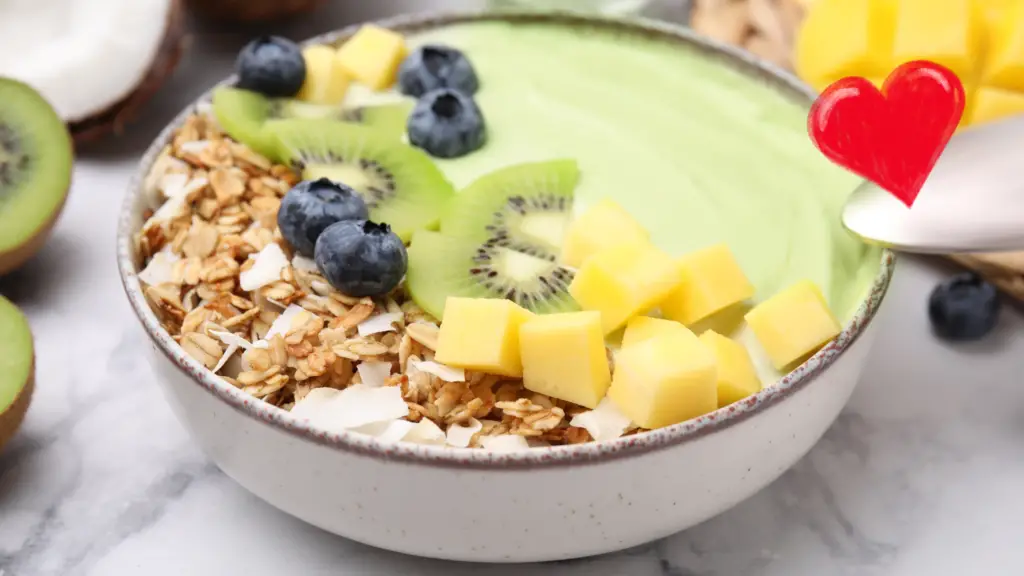
One of the best parts about a matcha smoothie bowl is the endless possibilities for customization.
You can tailor your bowl to your tastes or nutritional needs by experimenting with different toppings and add-ins.
Topping Ideas for Extra Flavor and Texture
Coconut Flakes
Sprinkle unsweetened shredded coconut or large coconut flakes on top for a subtle, tropical sweetness and a bit of crunch.
Coconut also adds healthy fats, which contribute to satiety and energy.
Fresh Berries
Add ¼ cup of fresh berries like blueberries, strawberries, or raspberries for a burst of sweetness and color.
Berries are rich in antioxidants, making them a perfect complement to matcha’s health benefits.
Pumpkin Seeds
For a crunchy, nutty flavor, toss a tablespoon of pumpkin seeds over your bowl.
They provide a good source of zinc and magnesium, which are important for immune function and muscle recovery.
Cacao Nibs
If you’re a chocolate lover, cacao nibs are a great topping option.
They offer a rich, slightly bitter taste and are loaded with antioxidants.
Plus, they add a nice crunch.
Sweetener Options
If you prefer your smoothie bowl on the sweeter side, you can add natural sweeteners without compromising its health benefits:
- Honey: A drizzle of raw honey adds a natural sweetness and a hint of floral flavor. It’s a great option if you’re not strictly vegan.
- Agave Syrup: For a plant-based sweetener, agave syrup offers a mild sweetness that blends well with matcha’s earthy notes.
- Medjool Dates: Blend in 1–2 pitted Medjool dates for a caramel-like sweetness and extra fiber. Dates are a great natural way to sweeten your bowl without adding processed sugars.
Add Protein and Boosters
For a more filling and nutritionally complete smoothie bowl, consider adding protein and superfood boosters:
Vegan Protein Powder
Add a scoop of plant-based protein powder (like pea, hemp, or rice protein) to increase the protein content.
This is especially helpful if you’re having your smoothie bowl as a post-workout meal or need it to keep you full longer.
Collagen
If you’re not vegan, adding a scoop of collagen powder is another way to boost the protein content.
Collagen supports skin, joint, and gut health, and it blends seamlessly into the smoothie without affecting the taste.
Superfoods
Boost the nutrient profile even further by adding superfoods like maca powder or spirulina.
Maca powder can help with energy and endurance, while spirulina is packed with protein, vitamins, and minerals.
Just a teaspoon of either can enhance your smoothie bowl’s health benefits.
Common Mistakes to Avoid
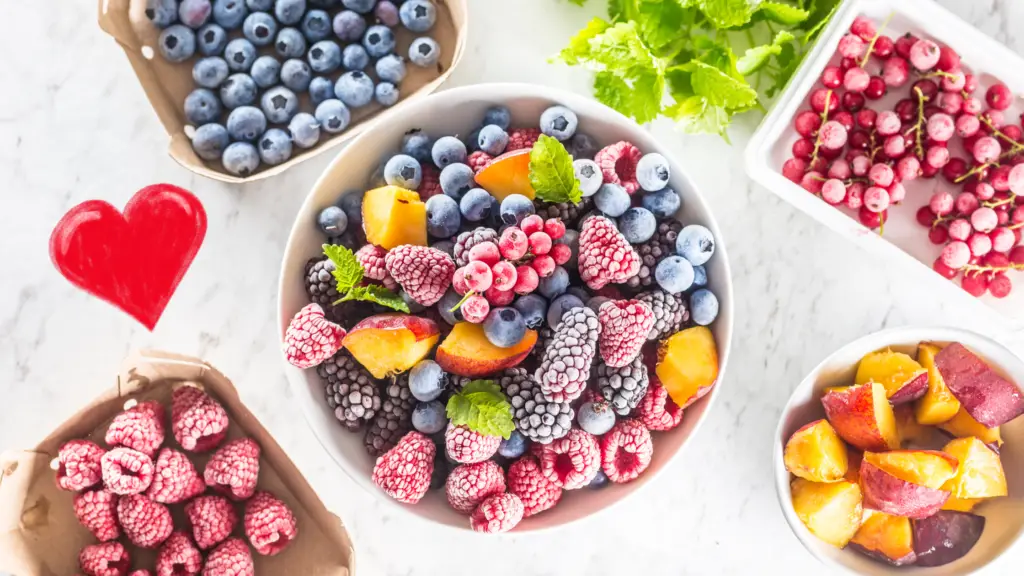
Freezing the fruit in advance is key to achieving that thick, ice cream-like texture.
If you use fresh fruit instead of frozen, the smoothie will be thinner and less creamy.
Always freeze your bananas, mangoes, or pineapples before blending.
You can also freeze your greens (like spinach or kale) for a colder, more refreshing bowl.
This step ensures the smoothie holds up well as a bowl rather than turning into a regular drinkable smoothie.
Next, what about toppings?
Toppings are more than just a visual appeal—they add extra texture, flavor, and nutrients to your smoothie bowl.
Without toppings, your bowl can feel a little flat in both taste and texture.
Adding ingredients like fresh fruit, seeds, nuts, or granola provides a satisfying crunch and boosts the overall nutritional profile.
Conclusion
Incorporating matcha into your daily routine is a simple way to boost your energy, support your metabolism, and add a wealth of antioxidants to your diet.
A matcha smoothie bowl is a delicious, easy-to-make option that offers endless possibilities for customization.
Experiment with different fruits, seeds, and toppings to find your perfect combination.
Enjoy your delicious matcha smoothie bowl!
FAQ’s
Can I make this recipe ahead of time?
While it’s best to enjoy your matcha smoothie bowl fresh for the optimal texture and flavor, you can prepare it ahead of time.
If you make it in advance, store it in an airtight container in the fridge for up to 24 hours.
Keep in mind that the texture may become slightly thinner as the ingredients thaw, so you might want to add extra frozen fruit or give it a quick stir before serving.
What are the best matcha powders for smoothie bowls?
For smoothie bowls, look for culinary-grade matcha, which is specifically made for blending into recipes.
Culinary-grade matcha is less expensive than ceremonial-grade matcha and has a slightly more robust flavor that holds up well when mixed with other ingredients.
Some popular, high-quality brands to consider include Jade Leaf Matcha, MatchaBar, and Ippodo Matcha.
Always choose matcha that is vibrant green in color and sourced from Japan, as it indicates higher quality.
How do I make my smoothie bowl thicker?
To make your smoothie bowl thicker, use less liquid—start with about ¾ cup of milk and only add more if necessary.
You can also increase the amount of frozen fruit, like bananas or mangoes, which naturally thicken the smoothie.
If you still want more thickness, try adding ice cubes, chia seeds, or even a small handful of oats to achieve a creamier, thicker consistency.
Avoid adding too much liquid early on, as it’s easier to thin it out than to thicken it up.
